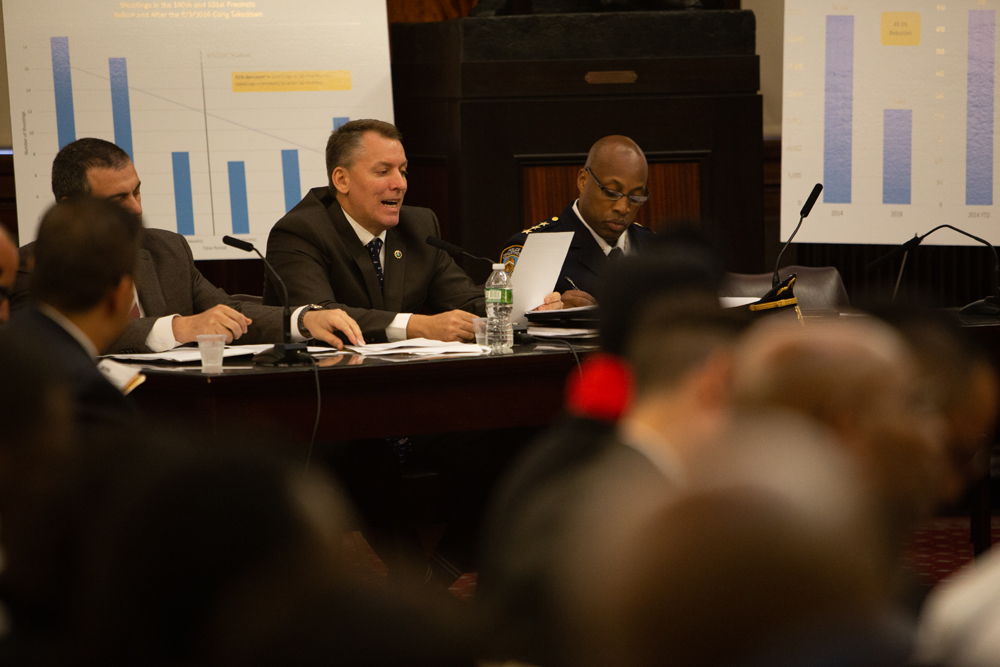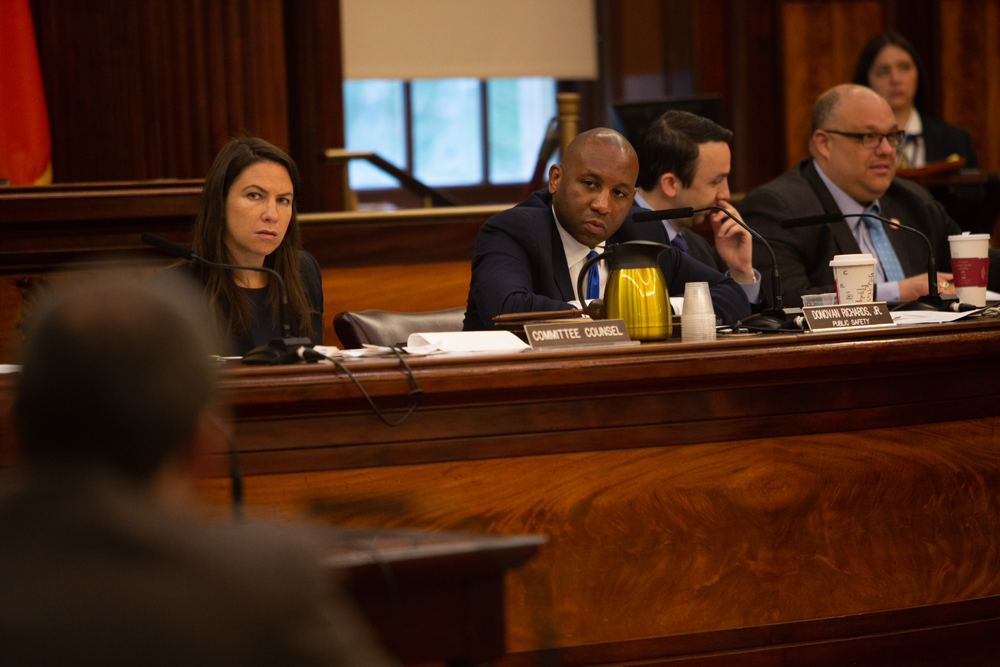New York City’s Gang Database Is 99% People of Color, Chief of Detectives Testifies
|

Photos by Clarissa Sosin
New York City Chief of Detectives Dermot F. Shea testified at City Hall in Manhattan Wednesday about the NYPD’s gang database. This was the first hearing to provide transparency into the controversial database.
NEW YORK CITY — Ninety-nine percent. The number sent an audible gasp throughout the City Council chamber. Chief of Detectives Dermot F. Shea had just read off the percentage of people of color on the NYPD’s controversial — and until now — largely secretive gang database.
Shea was talking publicly for the first time about one of the New York Police Department’s most popular crime-fighting tools. He testifiedWednesday before the City Council’s Committee on Public Safety in the database’s first comprehensive public examination.

Shea read the numbers from a stack of papers in front of him.
African Americans: 65 percent.
Non-white Hispanic: 24 percent.
Black Hispanic: 10 percent.
Shea said the gang database, whose number fluctuates as names are added and purged, stood at 17,441. Given those percentages, that means 17,267 of the individuals in the database are either black or Hispanic. Earlier in the morning critics rallied to protest the use of the database, saying it’s racist.
There are 1,460 people who are younger than 18 in the database. In response to questioning, Shea said there are 17 13-year-olds, 80 14-year-olds, 204 15-year-olds, 455 16-year-olds and 704 17-year-olds. “You can see how the number goes up as they get older,” he said. The average age of someone on the database is 27, he said.

Public Safety Committee Chair Donovan Richards, who led the hearing about the database, was doubtful about how the innocent could avoid being included.
The NYPD, which encompasses the largest detective bureau in the country, has no formal process for notifying parents whose children are in the database. But, he said, there are a number of informal ways that parents are alerted.
“I don’t want to make it seem like there is no interaction with the parents,” Shea said. “Nothing could be further from the truth.”
Click here for more New York gang-related coverage
Youth officers assigned to precincts and to transit and housing units might talk to the parents during the course of an investigation and the topic might come up then.
How does someone end up on the database, Public Safety Committee Chair Donovan Richards asked.
There are a number of ways, Shea said: One is what he described as self-admission. This often happens on social media, where gang members may talk about their affiliation, he said. Another is through two independent sources who tell a member of the department. That name then needs to be vetted by investigators. Anyone can be a source of that information — friends, teachers, family or a confidential informant.
Finally, he said, gang investigators can identify the presence of gang literature, tattoos, colors, clothing and other means of what they think is an indication of gang affiliation.
The
No comments:
Post a Comment